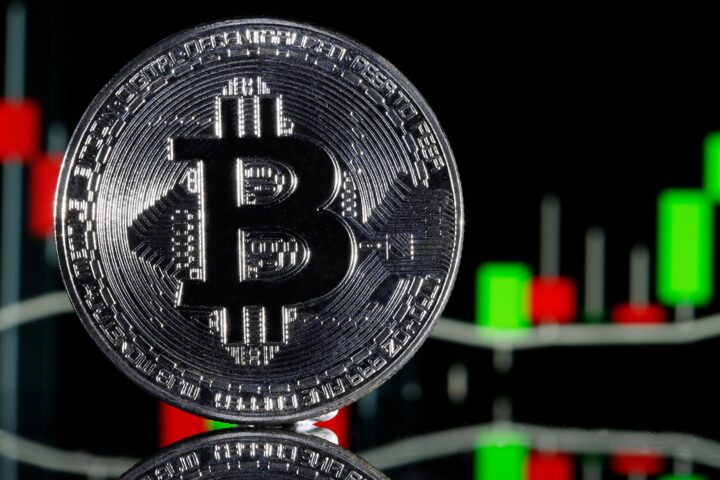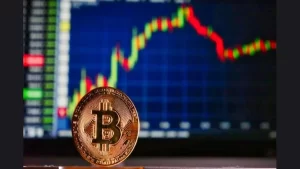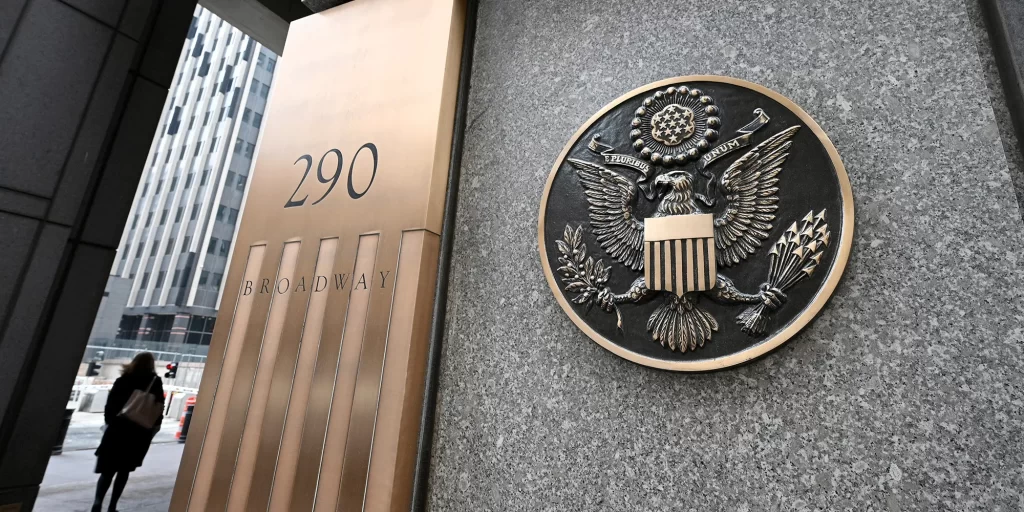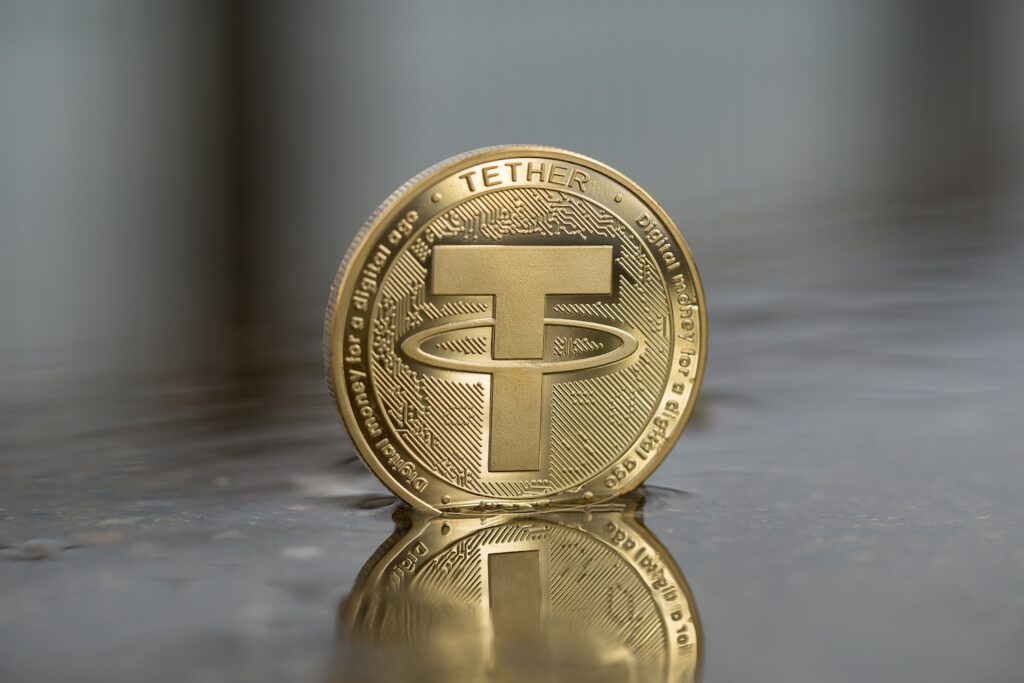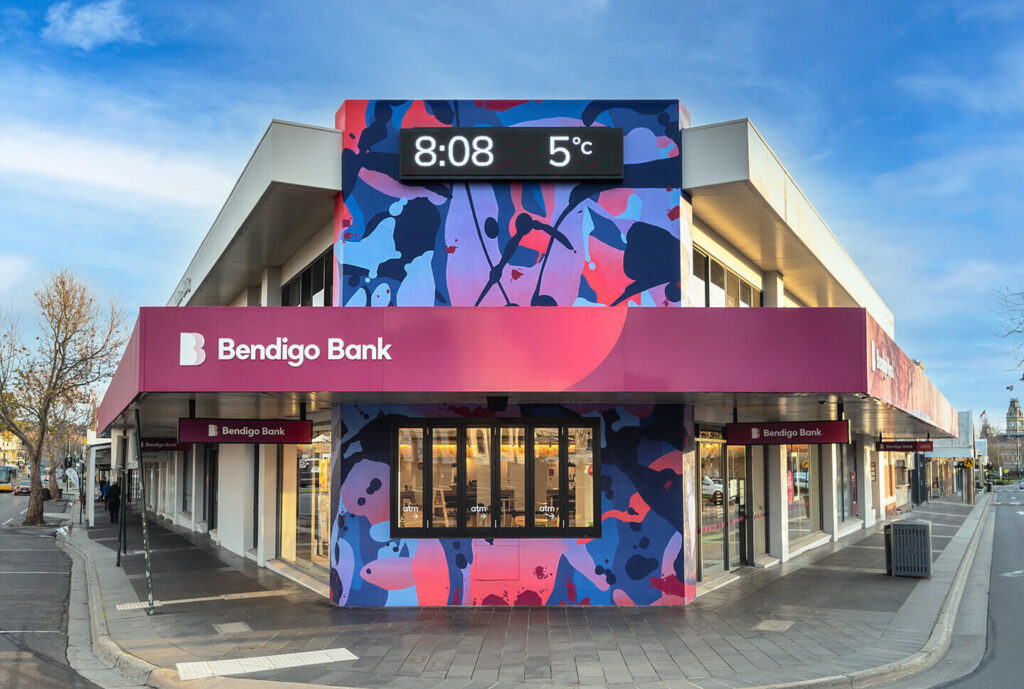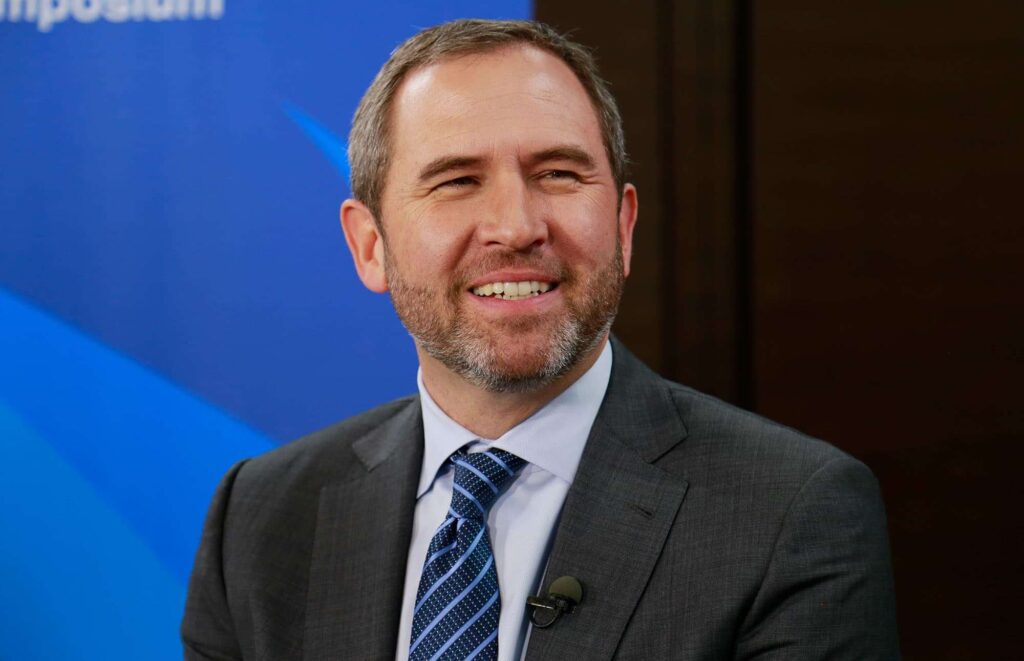The United States Internal Revenue Service (IRS) has recently issued a significant ruling impacting crypto investors in the country.
According to Revenue Ruling 2023-14, crypto investors must report their earnings from staking digital assets as gross income in the year they receive them.
Gross income includes any form of income, be it in money, property, services, or even staking rewards.
This ruling applies to cash-method taxpayers who receive crypto as compensation for validating transactions on proof-of-stake blockchains, regardless of whether they stake cryptocurrency directly or through a centralized crypto exchange.
The ruling clarifies that the fair market value of the staking rewards should be added to the investors’ annual income and determined at the time they gain control over the rewards.
“Dominion” is defined as the moment when the investor gains control and can sell, exchange, or otherwise dispose of the cryptocurrency rewards.
Notably, the IRS previously subjected crypto-mining rewards to both income and capital gains tax, but staking rewards were not covered until now.
The crypto tax firm Koinly acknowledged the lack of provisions for staking rewards until this new ruling.
Messari founder Ryan Selkis praised the ruling for taxing staking rewards only when they become accessible for sale.
READ MORE: SEC Chairman Gary Gensler Raises Alarm Over Widespread Fraud in Crypto Market
This means that rewards that are accrued but locked will not be taxable until the investor gains “dominion and control” over them.
Selkis also highlighted that the IRS is treating crypto staking similarly to stock dividends.
However, some experts expressed their disappointment with the ruling. Jason Schwartz, tax partner and digital assets co-head at Fried Frank, stated that the ruling was unsurprising but disappointing.
He argued that tax law traditionally required the existence of a payer, such as an employer or counterparty, for income to be taxable, making this ruling a departure from that norm.
This ruling comes amidst increased regulatory scrutiny in the crypto space. U.S. federal regulators, including the Securities and Exchange Commission (SEC), have been targeting crypto-staking service providers and exchanges, alleging that they are engaging in illegal securities sales.
In conclusion, the IRS’s latest tax bulletin requires U.S. crypto investors to report staking rewards as gross income in the year they receive them.
This move aims to clarify the treatment of income earned from staking digital assets for taxation purposes and brings staking rewards into the fold of taxable crypto earnings.
Other Stories:
Liquid Staking Tokens Poised to Dethrone Ethereum’s Ether (ETH) as Dominant DeFi Asset
Bitcoin’s Reduced Volatility Sparks Anticipation for Exciting Long-Term Bull Signal
The Ukrainian government has made a recent request to obtain financial information from local cryptocurrency companies.
The National Bank of Ukraine (NBU) has reached out to four crypto firms, including Kuna, CoinPay, GEO Pay, and Qmall, demanding financial statements for the first two quarters of 2023.
These crypto businesses have been asked to provide the required financial data within seven days of the request.
The NBU’s demand for information goes beyond just financial statements; they have also requested data on the operating volumes of these crypto firms and information about the receipt and transfer of funds.
Additionally, the NBU has asked the companies to issue statements for all accounts starting from the beginning of 2023.
Michael Chobanyan, the founder and CEO of Kuna exchange, shared this news with the public. He referred to a document distributed by the Ukrainian Telegram news channel, Politics of the country, as the source of the information.
Chobanyan confirmed the authenticity of the NBU’s request on his own Telegram channel, but he expressed uncertainty about the reasons behind the latest action from the NBU.
Chobanyan criticized the NBU’s actions, claiming that there was no precedent for such actions in Ukraine.
He also mentioned that Kuna exchange had previously left the business-to-customer market in Ukraine due to what he described as “predatory actions” by the NBU.
These actions caused a significant drop in exchange volumes for the company.
Despite the Ukrainian government’s apparent hostility towards the crypto industry, Chobanyan sees a silver lining in the situation.
READ MORE: BNB Smart Chain (BSC) Hit by Copycat Attacks
He stated that Kuna would now focus on the European market, particularly the business-to-business (B2B) sector.
He pointed out that Kuna recently launched a crypto-acquiring service called KunaPay, which might have influenced the NBU’s actions.
However, the NBU has not yet provided any clarifications or comments regarding its recent request for financial information from the crypto firms.
As the situation develops, this article will be updated to include any new information or statements from the NBU.
In summary, the Ukrainian government’s National Bank has requested financial information from several local cryptocurrency companies, raising questions about its motives and impact on the crypto industry in the country.
While there are concerns about the NBU’s actions, some companies like Kuna see this as an opportunity to focus on the European B2B market.
The NBU’s response to these developments remains pending.
Other Stories:
Liquid Staking Tokens Poised to Dethrone Ethereum’s Ether (ETH) as Dominant DeFi Asset
Bitcoin’s Reduced Volatility Sparks Anticipation for Exciting Long-Term Bull Signal
SEC Chairman Gary Gensler Raises Alarm Over Widespread Fraud in Crypto Market
Circle’s USD Coin (USDC) and other stablecoins are facing potential compliance challenges due to a new amendment in the 2024 National Defense Authorization Act (NDAA) recently passed by the United States Senate.
According to Berenberg analyst Mark Palmer’s July 31 investment note, the amendment could introduce new Know Your Customer (KYC) and Anti-Money Laundering (AML) measures that stablecoin issuers might struggle to comply with.
The proposed amendment requires the U.S. Treasury Secretary to establish examination standards for crypto assets to ensure compliance with money laundering and sanctions laws.
If it remains in the final version of the NDAA, it could present problems for stablecoin issuers.
Palmer pointed out that identifying stablecoin holders is only possible during issuance and redemption, and this requirement could lead to a deterioration in USDC’s market cap.
Over the past few months, USDC’s market cap has declined by approximately 39%, amounting to $17.5 billion since March 5.
This development not only impacts Circle but also poses challenges for Coinbase.
READ MORE: Bitcoin’s Reduced Volatility Sparks Anticipation for Exciting Long-Term Bull Signal
Palmer highlighted that in the first quarter of the year, 27% of Coinbase’s net revenue came from interest income on USDC. The potential setbacks for both Circle and Coinbase could be concerning for investors.
Coinbase’s shares have shown significant outperformance in the traditional equities market since the beginning of the year, surging 170% from $33 on January 1 to $98.61 at the time of the publication of the investment note.
Berenberg attributed this outperformance to favorable rulings for Ripple Labs and the interest generated by major institutions like BlackRock and Fidelity in filing for spot Bitcoin exchange-traded funds (ETFs).
However, the bullish factors for Coinbase might be on shaky ground. SEC Chair Gary Gensler’s recent comments have raised uncertainty among investors.
Gensler stated that cryptocurrencies could fall under the purview of the SEC, implying that regulations might be on the horizon.
Additionally, his response to Bitcoin ETF applications suggested potential opposition to their approvals.
Despite these uncertainties, Berenberg maintained a “hold” rating for Coinbase stock.
The company’s large balance of cash and equivalents offers financial cushion and flexibility for navigating the uncertain landscape of the cryptocurrency market.
Other Stories:
BNB Smart Chain (BSC) Hit by Copycat Attacks
SEC Chairman Gary Gensler Raises Alarm Over Widespread Fraud in Crypto Market
Liquid Staking Tokens Poised to Dethrone Ethereum’s Ether (ETH) as Dominant DeFi Asset
On July 30, several liquidity pools within Curve Finance, a significant decentralized finance (DeFi) protocol, were targeted in an attack stemming from a vulnerability discovered in the Vyper programming language.
Vyper is specifically designed for the Ethereum Virtual Machine (EVM) to facilitate smart contract development.
Curve Finance’s prominence in the DeFi space is largely attributed to its vital liquidity services.
However, the recent code vulnerability jeopardized approximately $100 million worth of digital assets, raising concerns within the community.
The flaw was identified in versions 0.2.15, 0.2.16, and 0.3.0 of the Vyper language, resulting in a malfunctioning reentrancy lock.
As a consequence, millions of dollars were drained from four Curve pools, namely aETH/ETH, msETH/ETH, pETH/ETH, and CRV/ETH.
Moreover, the impact of this vulnerability on three of its variations has the potential to affect other protocols in the DeFi ecosystem.
Following the attack, the native token of Curve Finance, CRV, experienced a sharp decline in value on decentralized exchanges.
However, the situation was salvaged when centralized exchange price feeds came into play.
READ MORE: SEC Suffers Setback as Court Overturns Ruling on SPIKES Index Securities Classification
The CRV price plummeted to $0.086 on decentralized exchanges, while maintaining a trading value of $0.60 on centralized exchanges (CEXs), thereby preventing the token’s total collapse.
The recovery was attributed to the integration of Chainlink’s oracle system within Curve pools, which incorporates price feeds from various sources, including centralized exchanges.
If it weren’t for the CEX price feed, Curve Finance would have faced a complete collapse.
This irony caught the attention of Binance CEO Changpeng Zhao, who found humor in the fact that a CEX price feed ultimately saved the DeFi protocol.
Zhao clarified that the Vyper vulnerability had no impact on Binance, as the exchange had promptly updated its code to the latest version. He also emphasized the significance of regularly upgrading code libraries to maintain robust security measures.
The bug within the earlier Vyper versions is estimated to be at least 1.5 years old, suggesting that the attacker invested substantial time and resources in exploiting this weakness within a high-value protocol.
A Vyper program contributor on Twitter even suggested that the level of effort put into the exploit indicated a potential state-sponsored attack.
As the DeFi space continues to evolve and gain traction, incidents like these underscore the importance of thorough code audits, prompt upgrades, and vigilance in the face of potential vulnerabilities to ensure the security and resilience of decentralized finance protocols.
Other Stories:
Margot Robbie’s Comparison of Bitcoin to Ken from Barbie Ignites Debate
Blockchain Could Save Financial Institutions $10 Billion by 2030: Ripple-FPC Report
Tech Firms Call on European Union to Support Open-Source AI in New Regulations
Australia’s Bendigo Bank has joined the ranks of major banks in the country by announcing blocks on “high-risk crypto payments” in an effort to safeguard its 2.3 million customers from investment scams.
The move, disclosed on July 31 by Jason Gordon, the bank’s head of fraud, entails implementing new rules on instant payments to crypto exchanges to add “friction to certain genuine payments.”
While the bank has stated its intentions to combat fraudulent transactions and enhance customer protections, it has not disclosed specific details about the high-risk transactions being targeted or the exchanges that may be affected.
This comes after similar actions were taken in recent months by three of Australia’s major banks—Commonwealth Bank, National Australia Bank (NAB), and Westpac.
Chainalysis APAC Policy Head Chengyi Ong warned in an earlier interview that such actions could force Australia’s crypto community to resort to offshore exchanges for their transactions.
Ong argued that blocking exchanges alone would not deter criminal actors, as they could simply shift to other platforms—crypto or otherwise.
READ MORE:Pro-XRP Lawyer Alleges SEC’s Actions Driven by Safeguarding Corporate Capitalism
Moreover, uncertainty over banking access might push crypto exchanges and users beyond the reach of regulatory authorities.
Ong proposed a more holistic approach, calling for cooperation between banks, regulators, telecommunication providers, and social media platforms to tackle every potential point of interaction between scam victims and perpetrators.
Dr. Aaron Lane, a senior lecturer with the RMIT Blockchain Innovation Hub, echoed this sentiment, suggesting that banks should work constructively with exchanges rather than taking a blanket approach of debanking the entire industry or asset class.
He recommended reserving debanking as a risk tool for individual cases of serious and unacceptable risk.
Australia has been considering crypto-specific laws for over three years, prompting Dr. Lane to call on lawmakers to move crypto law reform “out of the too-hard basket.”
The Department of the Treasury also issued a statement in June expressing similar concerns, highlighting that inaction on debanking could impede financial services competition and innovation, potentially driving businesses to operate solely in cash.
In conclusion, Bendigo Bank’s decision to block high-risk crypto payments aligns with actions taken by other major Australian banks.
While the move is intended to protect customers from investment scams, experts argue that a more comprehensive approach involving cooperation between various stakeholders is needed to address the issue effectively.
Other Stories:
Kyrgyzstan Expands Cryptocurrency Mining with Government Backing at Hydro Power Plant
French Data Protection Agency Investigates Worldcoin
Worldcoin’s Iris Scanning Project Raises Privacy and Sovereignty Concern
Bitcoin (BTC) experienced reduced volatility as it approached the July 30 weekly close, leaving traders anticipating a significant long-term bullish signal.
Over the weekend, BTC/USD exhibited sideways movement, trading within a narrow $150 range.
Despite several macroeconomic data events throughout the week, the market remained calm, leading to speculations of an imminent breakdown.
Pseudonymous trader Daan Crypto Trades highlighted that the compression in price action had not been seen since the beginning of 2023, suggesting that a substantial move might be on the horizon.
Comparisons were drawn to earlier in the year when Bitcoin’s Bollinger Bands resembled the current conditions before the price surged 70% in the first quarter.
Analysis of the Binance BTC/USD order book by monitoring resource Material Indicators revealed that whales’ buying pressure coincided with increased resistance near $30,000.
However, they expected significant support to remain until the weekly and monthly candle closes on July 29.
READ MORE: Pro-XRP Lawyer Alleges SEC’s Actions Driven by Safeguarding Corporate Capitalism
The potential bullish cross on Bitcoin’s monthly moving average convergence/divergence (MACD) indicator drew significant attention as market observers noted its proximity to confirmation.
Historical patterns indicated that this could lead to upside gains in the future.
Although the cross held positive implications, Trading resource Stockmoney Lizards cautioned that Bitcoin might still be in its summer correction mode.
A chart presented by Stockmoney Lizards displayed a prior monthly MACD cross in late 2015, which preceded Bitcoin’s surge two years later, resulting in the previous cycle’s all-time high of $20,000.
The cross signaled preparations for the significant price movement that followed.
While lower-timeframe MACD crosses can sometimes be false alarms, the significance of a weekly cross in August 2021 was evident as it preceded the move to Bitcoin’s current all-time highs in November of that year.
As the weekly close approached, traders kept a close eye on Bitcoin’s price action, hoping to witness the potential bull signal and foreseeing the implications it might have on the future trajectory of the cryptocurrency.
Other Stories:
Worldcoin’s Iris Scanning Project Raises Privacy and Sovereignty Concern
Kyrgyzstan Expands Cryptocurrency Mining with Government Backing at Hydro Power Plant
The Bank Policy Institute (BPI), a pro-banking organization in the US, has come out in support of Senator Elizabeth Warren’s efforts to strengthen cryptocurrency regulations.
Senator Warren, along with three other senators, recently reintroduced the Digital Asset Anti-Money Laundering Act, which aims to impose stricter rules to combat money laundering and terrorism financing within the crypto industry.
Despite past criticism from Senator Warren, the BPI expressed its endorsement of the bipartisan legislation.
In a statement, the BPI emphasized the need for the existing anti-money laundering and Bank Secrecy Act framework to encompass digital assets, in order to safeguard the nation’s financial system against illicit finance.
The proposed seven-page bill, if enacted, would require digital asset wallet providers, miners, and blockchain validators to maintain records of customer identities.
Additionally, financial institutions would be prohibited from using digital asset mixers, such as Tornado Cash, which are designed to obscure blockchain data.
Senator Warren and her co-sponsors, Senator Joe Manchin, Senator Roger Marshall, and Senator Lindsey Graham, announced the reintroduction of the bill.
In addition to customer identity tracking, the legislation would prompt relevant government bodies, including the Treasury Department, Securities and Exchange Commission, and Commodity Futures Trading Commission, to establish new examination processes to ensure compliance with anti-money laundering and terrorism financing requirements.
Several organizations, including the Massachusetts Bankers Association, AARP, the National Consumer Law Center, and the National Consumers League, have expressed their support for the bill.
READ MORE: Why Didn’t Bitcoin (BTC) Enter a New Rally?
However, not everyone in the crypto community agrees with the proposed legislation.
Tyler Winklevoss, co-founder of the Gemini crypto exchange, criticized the bill in a tweet, suggesting that those opposing it are making the right decision.
Senator Warren originally introduced the bill in December 2022, arguing that current anti-money laundering laws do not adequately cover the crypto industry.
She has consistently called for cryptocurrencies to be subjected to the same regulations as traditional banking institutions to prevent money laundering and illegal activities.
Gary Gensler, Chairman of the US Securities and Exchange Commission (SEC), has also been vocal about his concerns regarding the crypto market.
He highlighted the prevalence of fraud in the sector and pointed out that many crypto investors do not receive the same level of protection as investors in traditional securities markets.
In conclusion, the Digital Asset Anti-Money Laundering Act seeks to tighten regulations on cryptocurrencies to combat illicit financial activities.
While Senator Warren and the BPI back the bill, some members of the crypto community, including Tyler Winklevoss, have expressed reservations. Gary Gensler, the SEC Chairman, also shares concerns about fraudulent activities in the crypto market and advocates for better investor protection.
Other Stories:
Revealed: The Best Crypto Marketing & PR Agency
3 Best Crypto Projects That Will Boom In 2023 & The Next Bull Run
SEC and Binance Oppose Eeon’s Intervention in Crypto Exchange Lawsuit
Blockchain technology is predicted to save financial institutions nearly $10 billion in cross-border payment expenses by 2030, says a report by Ripple and the U.S.
Faster Payments Council (FPC). Conducted among 300 finance professionals from 45 countries, the report revealed that 97% see blockchain as critical for improving payment systems over the next three years.
Over half the respondents believe the primary benefit of cryptocurrency lies in its ability to reduce costs.
As per Juniper Research, the use of blockchain in global transactions could result in significant cost savings for banks in the upcoming six years, potentially around $10 billion by 2030.
The report underscores that as the e-commerce market grows and businesses target international markets, cross-border payments will likely surge.
Predictions indicate that global cross-border payment flows could hit $156 trillion by 2030, driven by a 5% annual growth rate.
However, opinions diverged regarding the timeline for wide-scale merchant adoption of digital currency payments.
READ MORE: SEC and Binance Oppose Eeon’s Intervention in Crypto Exchange Lawsuit
Half of the participants were optimistic about most merchants embracing crypto payments within three years, but confidence levels varied regarding adoption within the next year.
Notably, participants from the Middle East and Africa showed the highest confidence (27%) in widespread merchant acceptance of crypto within the next year.
Conversely, respondents from the Asia-Pacific region were less optimistic, with just 13% predicting a similar adoption timeframe.
These findings follow a report from the Bank of International Settlements (BIS), indicating that up to 24 central bank digital currencies (CBDCs) might be in circulation in the next six years.
The BIS survey, which covered 86 central banks, revealed that 93% of them are exploring CBDCs, forecasting the circulation of up to 15 retail and nine wholesale CBDCs by 2030.
Other Stories:
3 Best Crypto Projects That Will Boom In 2023 & The Next Bull Run
The French National Commission on Informatics and Liberty (CNIL), which serves as France’s data protection agency, is raising concerns about the data collection practices employed by Worldcoin, as per a Reuters report.
In an email sent to Reuters on July 28, CNIL expressed doubt regarding the legality of the data collection process and the conditions under which biometric data is being stored by Worldcoin.
The commission further revealed that it had already launched investigations into the matter and was cooperating with the Bavarian state authority in Germany, which is also looking into the issue.
Additionally, it was reported by Reuters on July 25 that Worldcoin might face inquiries from data regulators in the United Kingdom after its launch.
Worldcoin, the brainchild of OpenAI, the company behind the popular AI chatbot ChatGPT, was officially launched on June 24.
The project requires users to submit a scan of their iris in exchange for a digital ID and free cryptocurrency.
READ MORE: Former Twitter Product Director Exposes Peculiarities of Working Under Elon Musk
The initiative has seen considerable interest, with approximately 2.1 million people signing up during the trial period over the past two years, according to the company’s website.
Since its official launch, Worldcoin boasted on Twitter (which is undergoing rebranding to X) that a new World ID is being verified every 7.6 seconds by a unique human, and new records are being set daily.
Pictures of Worldcoin orbs in different cities worldwide, including Seoul, Mexico City, and Paris, have been posted on Twitter since the launch on July 24.
The reception within the crypto community has been mixed. While some users believe that Worldcoin’s centralization could lead to potential failures, others argue that proof-of-personhood is crucial, especially with the increasing presence of AI.
Reports have emerged indicating that Worldcoin has struggled to attract new sign-ups since its launch.
The three designated locations in Hong Kong reportedly only saw around 200 sign-ups on the first day, with a total of 600 sign-ups overall.
However, co-founder Sam Altman disputed these claims by posting a video of a long line of people in Japan waiting to complete iris scans on the following day.
In conclusion, Worldcoin’s data collection methods have come under scrutiny from data protection authorities, with questions raised about the legality of the process and the storage of biometric data.
Despite significant interest and participation, the initiative has faced both praise and criticism within the crypto community.
Other Stories:
Crypto.com Receives Approval from Dutch Central Bank
Crypto Mining Firm Explores Initial Public Offering (IPO) in UAE
The launch of the memecoin Pond0x has resulted in significant financial losses for investors, with reports on social media indicating that millions of dollars were at stake on July 28.
According to data from the Maestro trading app, the Pond0x (PNDX) token experienced a price surge, reaching $0.36, only to swiftly plummet to nearly zero within just five minutes.
Jeremy Cahen, better known as “Pauly” on Twitter and the founder of Not Larva Labs, announced the Pond0x launch on July 28.
Not Larva Labs is the developer of a nonfungible token trading app for CryptoPunks and a separate parody collection called CryptoPhunks, unaffiliated with Larva Labs, the creators of CryptoPunks.
In the announcement, Cahen shared the contract address for PNDX and the URL for its official web app.
The web app featured a Pepe meme graphic, similar to the successful memecoin Pepecoin (PEPE), which gained popularity with a ticker price of $0.000001.
The app allowed users to mint new PNDX tokens by exchanging them for a fixed amount of Ether (ETH), akin to a presale or fundraiser.
However, confusion arose as some users expected the fundraiser to occur on Uniswap, and the inclusion of both the website and contract address in the same post added to the ambiguity, as per social media reports.
READ MORE: Crypto Mining Firm Explores Initial Public Offering (IPO) in UAE
Several users purchased PNDX tokens on Uniswap using bot trading apps, such as Maestro or Unibot, causing its price to rise. Meanwhile, others minted tokens through the web app and sold them at a profit.
Numerous investors reported losing thousands or even millions of dollars. Complaints flooded Cahen’s initial post, with users expressing their significant losses.
One disillusioned Pepecoin enthusiast lamented losing 4 ETH (worth $7,484) for nearly worthless tokens.
Another user claimed their $50,000 investment was now valued at a mere $10, and yet another revealed losing a staggering $2.5 million.
A report by memecoin holder Rune estimated that investors collectively lost over $2.2 million during the Pond0x launch.
In addition to financial woes, a user discovered a flawed transfer function in PNDX, enabling users to transfer coins from any other account.
The transfer function exhibited an unusual behavior, calling a separate “brutalized_” function instead of updating the user’s balance.
The impact of this “brutalized_” function was not determined by Cointelegraph at the time of publication.
Rune later provided an updated report, indicating that the person responsible for draining funds from investors was now creating a new version of PNDX.
This new project aimed to offer a “dashboard” to compensate victims through a “community coin.”
Memecoins, tied to viral internet images or videos, gained prominence with the launch of Dogecoin in 2013 and remain popular today.
Notably, memecoins experienced price surges in connection with events such as the U.S. Securities and Exchange Commission suing crypto exchanges Coinbase and Binance, as well as during a U.S. House of Representatives hearing on unidentified flying objects when several alien-themed memecoins emerged and gained attention on social media.
Other Stories:
Former Twitter Product Director Exposes Peculiarities of Working Under Elon Musk

